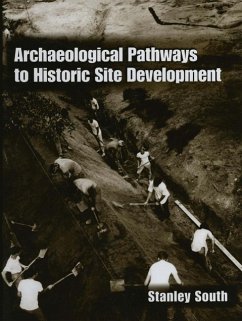
Confronting Scale in Archaeology (eBook, PDF)
Issues of Theory and Practice
Redaktion: Lock, Gary; Molyneaux, Brian
Versandkostenfrei!
Sofort per Download lieferbar
40,95 €
inkl. MwSt.
Weitere Ausgaben:

PAYBACK Punkte
20 °P sammeln!
Without realizing, most archaeologists shift within a scale of interpretation of material culture. Material data is interpreted from the scale of an individual in a specific place and time and then shifts to the complex dynamics of cultural groups extending over time and space. This ignoring of scale is the "concession" archaeologists make to interpretation. The introduction of geographical information systems (GIS) remote sensing, and virtual reality have expanded the scale at which data is interpreted even more, using multiple scales at the same time without recognizing the significance of t...
Without realizing, most archaeologists shift within a scale of interpretation of material culture. Material data is interpreted from the scale of an individual in a specific place and time and then shifts to the complex dynamics of cultural groups extending over time and space. This ignoring of scale is the "concession" archaeologists make to interpretation. The introduction of geographical information systems (GIS) remote sensing, and virtual reality have expanded the scale at which data is interpreted even more, using multiple scales at the same time without recognizing the significance of their actions.
This book discusses the cultural, social and spatial aspects of scale and its impact on archaeology in practical and applicable cases. Each author takes one of the fundamental elements of archaeology - from the experience of time and space to the visualization of individuals, sites and landscapes to the intricacies of archaeological discourse - and shows how an awareness of scale can create new and exciting interpretations.
This book discusses the cultural, social and spatial aspects of scale and its impact on archaeology in practical and applicable cases. Each author takes one of the fundamental elements of archaeology - from the experience of time and space to the visualization of individuals, sites and landscapes to the intricacies of archaeological discourse - and shows how an awareness of scale can create new and exciting interpretations.
Dieser Download kann aus rechtlichen Gründen nur mit Rechnungsadresse in A, B, BG, CY, CZ, D, DK, EW, E, FIN, F, GR, HR, H, IRL, I, LT, L, LR, M, NL, PL, P, R, S, SLO, SK ausgeliefert werden.












